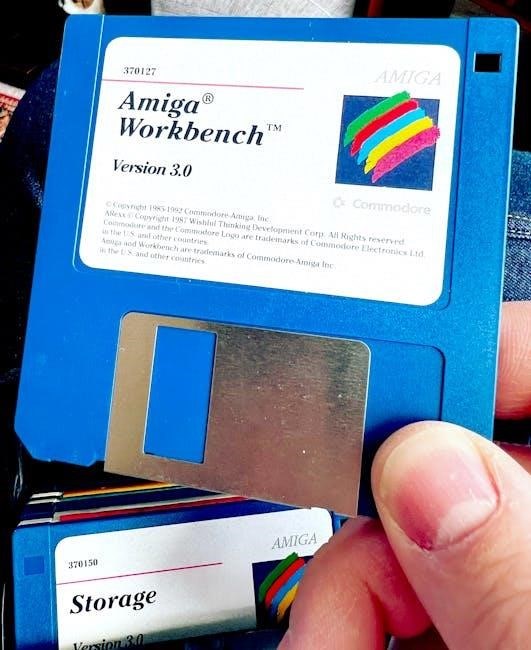Conners 3 Scoring Manual PDF: An Overview
The Conners 3 Scoring Manual PDF provides comprehensive guidance on administering‚ scoring‚ and interpreting the Conners 3 assessment․ It covers DSM-IV-TR and DSM-5 scoring options‚ detailing content scales and T-score interpretation․ The manual is essential for professionals using the Conners 3 to assess ADHD and related disorders․
What is the Conners 3?
The Conners 3rd Edition (Conners 3) represents over four decades of research into childhood and adolescent psychopathology․ It is a thorough and focused assessment tool designed to evaluate ADHD and common comorbid disorders in children and adolescents aged 6 to 18․ The Conners 3 is invaluable when making decisions about clinical diagnoses and educational interventions․ It assesses cognitive‚ behavioral‚ and emotional problems‚ providing perspectives from teachers‚ parents‚ and students․
The Conners 3 measures norm-referenced behavior‚ yielding ratings on various scales․ It offers two scoring options: DSM-IV-TR and DSM-5‚ aligning with diagnostic criteria from the respective editions of the Diagnostic and Statistical Manual of Mental Disorders․ The assessment offers comprehensive results‚ including a total score and symptom count‚ alongside an easy-to-understand summary for parents and teachers․ Moreover‚ it facilitates comparisons between two to four administrations‚ documenting changes over time․
The Conners 3 aids in the diagnosis of ADHD by rating symptoms and providing a score that indicates severity․ It is a leading assessment for ADHD and comorbid disorders in children and youth‚ offering valuable insights for diagnosis and treatment planning․
Conners 3 Kits and Components
The Conners 3 offers various kits and components tailored to different administration and scoring preferences․ These include options for both computer scoring and hand-scoring methods․ Computer-scored (CS) administrations utilize specialized forms designed for electronic data entry‚ streamlining the scoring process․ Hand-scored (HS) forms are available for situations where computer scoring is not feasible‚ allowing for manual calculation of scores․
Short Forms provide a subset of items from the full-length version‚ offering a more concise assessment option when time is limited or a brief overview is sufficient․ The full-length version‚ updated with DSM-5 criteria‚ provides more comprehensive results and is recommended for initial evaluations and comprehensive re-evaluations․ These kits encompass forms for parents‚ teachers‚ and self-reports‚ capturing a multi-faceted view of the individual’s behavior and symptoms․
The Conners 3 kits often include the essential manual‚ which provides detailed instructions for administration‚ scoring‚ and interpretation․ Additional forms and materials can be purchased separately to replenish supplies or accommodate specific needs․ This flexibility ensures that professionals can select the most appropriate tools for their assessment context․

Scoring Options: DSM-IV-TR and DSM-5
The Conners 3 offers two distinct scoring options to align with the diagnostic criteria outlined in different versions of the Diagnostic and Statistical Manual of Mental Disorders (DSM)․ The DSM-IV-TR scoring option bases its symptom scales on the diagnostic criteria presented in the DSM-IV-TR‚ providing a framework for evaluating symptoms according to those established guidelines․ This option is valuable for maintaining consistency with previous assessments or when the DSM-IV-TR criteria are specifically required․
The DSM-5 scoring option‚ on the other hand‚ utilizes the updated diagnostic criteria from the DSM-5․ This allows for a more current and refined assessment of symptoms‚ reflecting the latest understanding of mental health disorders․ The DSM-5 scoring incorporates changes in diagnostic thresholds and symptom presentation‚ providing a more accurate reflection of an individual’s current status․
Both scoring options are available for the MHS Online Assessment Center and the MHS Scoring Software‚ offering flexibility in how the Conners 3 is administered and scored․ The choice between DSM-IV-TR and DSM-5 scoring depends on the specific clinical or research needs of the assessment․
Conners 3 Content Scales: Detailed Scores and Interpretation
The Conners 3 assessment includes several content scales that provide detailed insights into specific areas of behavior and emotional functioning․ These scales offer a comprehensive overview of an individual’s strengths and weaknesses‚ aiding in targeted interventions․ Each content scale yields a raw score‚ which is then converted into a T-score for comparison against a normative sample․
Key content scales include Inattention‚ Hyperactivity/Impulsivity‚ Learning Problems/Executive Functioning‚ and Defiance/Aggression․ The Inattention scale assesses difficulties with focus‚ distractibility‚ and organization․ The Hyperactivity/Impulsivity scale measures excessive activity‚ restlessness‚ and impulsive behaviors․ The Learning Problems/Executive Functioning scale explores challenges in academic performance and cognitive processes․ Lastly‚ the Defiance/Aggression scale evaluates oppositional behaviors‚ aggression‚ and rule-breaking tendencies․
Interpretation of these scales involves examining the T-scores‚ with higher scores indicating more significant concerns․ Clinical judgment is crucial‚ considering individual history and other relevant factors․ The Conners 3 manual provides detailed guidelines for interpreting each scale‚ enabling professionals to develop effective intervention strategies․

T-Scores and Interpretation Guidelines
T-scores are a fundamental component of the Conners 3 assessment‚ providing a standardized measure of an individual’s behavior relative to a normative sample․ These scores are essential for interpreting the results of the assessment and making informed decisions about diagnosis and intervention․ T-scores are calculated based on raw scores obtained from the Conners 3 rating scales‚ which are then transformed to a standardized scale with a mean of 50 and a standard deviation of 10․
Interpretation guidelines for T-scores typically categorize scores into different ranges‚ each indicating a level of concern․ T-scores between 60 and 65 are often considered borderline‚ suggesting some elevated symptoms․ Scores between 65 and 70 are considered elevated‚ indicating significant concerns․ T-scores of 70 or higher are considered very elevated‚ indicating substantial problems․
It’s crucial to consider the context of the individual being assessed‚ including their age‚ gender‚ and cultural background‚ when interpreting T-scores․ Clinical judgment is essential in integrating T-score data with other information‚ such as observations‚ interviews‚ and medical history‚ to formulate a comprehensive understanding of the individual’s behavior and functioning․
Validity Scales and Their Importance
Validity scales are integral to the Conners 3 assessment‚ serving as crucial indicators of the reliability and accuracy of the obtained results․ These scales help identify response patterns that may compromise the validity of the assessment‚ such as exaggeration‚ minimization‚ or random responding․ By examining the scores on validity scales‚ clinicians can determine whether the results accurately reflect the individual’s behavior or if there are factors that may have influenced the responses․
The Conners 3 typically includes several validity scales‚ such as the Positive Impression scale‚ the Negative Impression scale‚ and the Inconsistency Index․ The Positive Impression scale assesses the tendency to present oneself in an overly positive light‚ while the Negative Impression scale measures the inclination to exaggerate symptoms or present oneself in an overly negative way․ The Inconsistency Index evaluates the consistency of responses across similar items‚ identifying instances where the individual may have answered questions randomly or carelessly․
Interpreting validity scales involves comparing the individual’s scores to established norms and cutoffs․ Elevated scores on the Positive or Negative Impression scales may suggest that the individual’s responses are biased‚ while a high Inconsistency Index may indicate that the responses are unreliable․ When validity scales indicate potential issues‚ clinicians should exercise caution in interpreting the results of the Conners 3 and consider alternative sources of information to inform their assessment․

Hand-Scored vs․ Software Kit
The Conners 3 offers two primary methods for scoring: hand-scoring and software-based scoring‚ each catering to different needs and preferences․ The hand-scored kit involves manually calculating raw scores from completed paper forms‚ then converting them to T-scores using provided tables in the manual․ This method requires careful attention to detail and can be time-consuming‚ especially for multiple assessments․ It suits professionals who prefer a hands-on approach or have limited access to technology․
Conversely‚ the software kit provides automated scoring‚ generating comprehensive reports quickly and efficiently․ Users input responses from paper forms into the software‚ which instantly calculates scores‚ produces detailed profiles‚ and offers interpretive guidance․ This method reduces the risk of manual errors and saves significant time‚ making it ideal for high-volume testing environments․ The software often includes features like progress monitoring and comparison across administrations‚ enhancing its utility for clinical practice and research․
The choice between hand-scoring and software kits depends on factors like budget‚ volume of assessments‚ and technological comfort․ While the hand-scored kit is cost-effective initially‚ the software kit’s efficiency and advanced features may justify the investment for professionals who regularly administer the Conners 3․

Updates to Conners 3: Validity‚ T-Score‚ and Scale Renaming
The Conners 3 has undergone several updates to enhance its clinical utility and accuracy․ Significant changes include revisions to validity scale interpretation‚ T-score interpretation‚ and the renaming of certain scales․ These updates aim to improve the assessment’s practical application in diagnosing and monitoring ADHD and comorbid disorders․
The refined validity scale interpretation helps clinicians better assess the reliability of the obtained data‚ ensuring that results are not compromised by response biases or inconsistencies; Updated T-score interpretation guidelines provide clearer thresholds for identifying clinically significant elevations‚ facilitating more accurate diagnostic decisions․ These thresholds are crucial for differentiating between normal variations and problematic behaviors‚ aiding in appropriate intervention planning․
One notable change is the renaming of the Aggression scale to Defiance/Aggression․ This modification reflects a broader understanding of the behaviors being assessed‚ encompassing both defiant and aggressive tendencies commonly associated with ADHD and related conditions․ This refined terminology offers a more comprehensive and nuanced assessment of behavioral issues‚ enabling more targeted interventions․ These updates collectively enhance the Conners 3’s precision and relevance in clinical practice․
Limitations and Discontinuation of Paper Products
The Conners 3‚ while a valuable assessment tool‚ has certain limitations that users should be aware of․ One significant development is the discontinuation of paper-based products‚ including QuikScore forms and manuals‚ by Multi-Health Systems Inc․ (MHS) as of December 31‚ 2023․ This transition means that users must now rely on digital scoring methods‚ such as software or online platforms‚ for administering and interpreting the assessment․
The reliance on digital formats may present challenges for some practitioners‚ particularly those in settings with limited access to technology or those who prefer traditional paper-based methods․ The change also necessitates familiarity with the scoring software or online assessment center‚ requiring training and adaptation․ Furthermore‚ the absence of paper forms may impact the accessibility of the Conners 3 for individuals who have difficulty engaging with digital interfaces or who require accommodations for visual or cognitive impairments․
Despite these limitations‚ digital scoring offers advantages such as automated calculations‚ reduced scoring errors‚ and efficient data management․ Practitioners should carefully consider these factors when transitioning to digital administration and ensure they have the necessary resources and training to effectively utilize the Conners 3 in its updated format․
Omitted Items and Scoring Implications
When administering the Conners 3‚ it’s crucial to understand the implications of omitted items on the scoring process and the overall validity of the assessment․ The Conners 3 manual specifies the maximum allowable number of omitted responses for each scale․ If the number of omitted items exceeds this limit for a given scale‚ that scale cannot be scored‚ and this is typically flagged on the report․ This is because a significant number of missing responses can compromise the reliability and accuracy of the scale score․
It is essential to encourage respondents to answer all questions honestly and as accurately as possible․ While respondents have the option to indicate they don’t know how to answer a question‚ skipping too many questions can prevent the evaluator from scoring the Conners 3 effectively․ This limitation underscores the importance of clear instructions and rapport-building during the assessment process․
Furthermore‚ understanding the pattern of omitted items can provide valuable clinical information․ For instance‚ a respondent consistently omitting items related to a specific symptom area may indicate avoidance or difficulty in acknowledging those particular challenges․ Therefore‚ while adhering to the scoring rules regarding omitted items‚ clinicians should also consider the qualitative information derived from the pattern of missing responses when interpreting the Conners 3 results․


